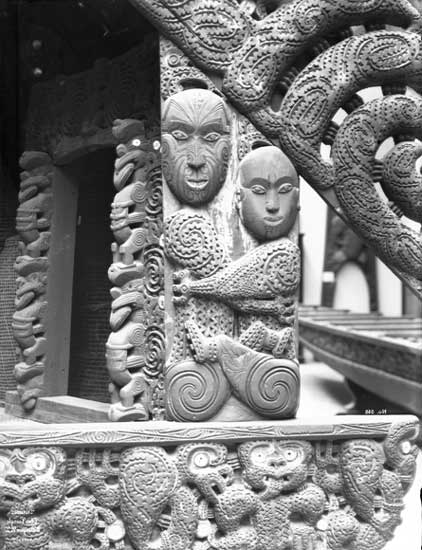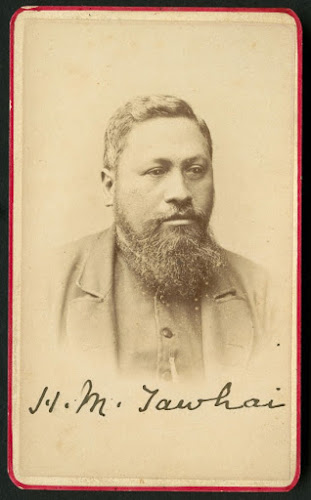The Great Kiwi OE Pioneered by Maori: Te Pehi Kupe's amazing Journey to England
England remained the ultimate travel destination for many Maori. The story of Hongi Hika’s famous 1820 encounter with King George IV is widely known. But how many people know the tale of how one chief from the Wellington region went to remarkable lengths to make the same journey? This is the story of Te Pehi Kupe and his amazing travels, as told in my recent book, The Meeting Place: Maori and Pakeha Encounters, 1642–1840.
It must have been one of those rare Wellington days. In February 1824 the trading vessel Urania found itself becalmed as it attempted to make its passage through Cook Strait. Three large waka, together carrying about 80 people, soon appeared in the distance. Captain Richard Reynolds, alarmed at this development and uncertain as to the intentions of the approaching craft, ordered his crew to prepare for a violent confrontation. But as the largest of the canoes came closer, ‘one of the natives in it stood up, and by signs and a few words of broken English intimated his desire to be taken on board’.
Reynolds refused permission, but the man in question, Te Pehi Kupe, a young Ngati Toa rangatira, was able to jump on board, employing signs to express his desire for muskets. His request rejected, Te Pehi spoke a few words of English, indicating his wish to go to Europe and see King George. Reynolds ordered his men to throw the chief overboard but Te Pehi, seeing what was intended, planted himself on the deck, seizing two ringbolts with a hold so tight that it was found impossible to loosen his grip. An attempt to land the chief the next day nearly ended in disaster for the Urania and so Reynolds reluctantly resolved to sail for his original destination of Lima with his unwanted guest on board.
 |
| Te Pehi Kupe, 1826, Rex Nan Kivell Collection NK1277, National Library of Australia |
Reynolds and Te Pehi soon forged a close friendship, the captain and the rangatira living and dining together on shore during their stays at Lima and elsewhere in South America. Those bonds were strengthened even further when Te Pehi saved Reynolds’ life at Montevideo, the captain having fallen overboard.
When the Urania reached Liverpool in February 1825, Reynolds took the chief into his home, despite being out of work, nursing Te Pehi through the seemingly inevitable illnesses which struck early Maori visitors to England and refusing offers to have his tattooed friend exhibited for money. The captain, who spoke a little Maori, was also required to act as interpreter on a number of occasions, since Te Pehi’s English never progressed much beyond that previously displayed in the Cook Strait.
Te Pehi’s doctor also befriended him, organising a number of excursions throughout Britain once the rangatira had recovered from measles. Everything relating to agriculture and smithwork was of particular interest to the chief, who also took an instant liking to the bow and arrow. The first sight of a horse astonished him, and it was not long before he was being thrown off one in his efforts to learn to ride. A military review involving a regiment of dragoons also appealed greatly to his tastes. Te Pehi visited factories, museums and other sites in Liverpool, Birmingham, Gloucester and London during his several months in England.
Said to be ‘conscious of the propriety of conforming himself to the customs of the country in which he was’, Te Pehi ‘was constantly on the watch to observe the behaviour of those around him’, picking up the finer points of English dining etiquette after some initial errors. But the chief was also at pains to ensure that at least some of his own customs were communicated to those English he encountered.
He took the greatest interest in a sketch of his face, emphasising the importance of his moko being accurately represented and explaining that the lines were not mere works of art or decoration but the Maori equivalent to an Englishman’s signature. To reinforce the point, he prepared his own detailed sketch of his facial moko from memory.
 |
| Te Pehi Kupe self-portrait, nzetc.victoria.ac.nz |
Although for most of his time in England Te Pehi was perfectly happy to shake hands with those he met, he insisted upon exchanging hongi with his closest companions when taking a final leave of them.
Yet it is clear that there remained ample grounds for moments of cultural confusion. And just as with earlier Maori visitors to England, Te Pehi was himself an object of considerable curiosity wherever he went. According to one account, whenever he rode out with his European friends, immense crowds of spectators mobbed Te Pehi, much to his satisfaction. One day, a girl selling oranges held up her basket to invite him to purchase some. Under the impression that she was offering the whole to him as a present, Te Pehi forthwith began to gather all the fruits into his carriage. Finding it impossible to explain the matter, Te Pehi’s companion secretly paid for the oranges, Te Pehi later telling Reynolds how extremely kind the people had been in making him presents.
The giving of gifts and generous hospitality towards important visitors were so ingrained in Maori culture that it seems Te Pehi was incapable of viewing these initial encounters in any other way. In this respect his experiences seem similar to those of the northern sojourners who had preceded Te Pehi. For all of these early travellers, British society was viewed through uniquely Maori cultural filters.
Europeans who confidently predicted that Maori exposure to a ‘superior’ civilisation would work wonders on the visitors were constantly disappointed. Te Pehi, like Hongi, was soon back fighting his tribal enemies — ironically employing muskets gained during his time overseas, and dying in battle just a few years later.
 |
| James and Te Wai Heberley, c. 1870s, PACOLL-580012, ATL |
Yet his experiences in England may have helped persuade Ngati Toa and other Cook Strait iwi to encourage trade and commerce in their region. In this way, Kupe’s voyage prepared the path for the distinctive mixed families like the Loves, the Thoms and the Heberleys of the Wellington region.



Te Pehi ote Rangi,titular and lineal leader and ariki of Ngati Haumia,hapu of Ngati Toa Rangatira.Korero Oonamata tells of him meeting Princess Victoria at Ascot Park. He drew attention to himself because he refused to wear pants,and wore the native maaro/loin cloth.Full facial moko would've drawn peoples attention. He left London with some presents (full chain mail)and traded for muskets in Sydney before returning to Kapiti with muskets for his tribe.Upon his returned he took the title Kupe, in honour of his ancestral navigator.
ReplyDelete